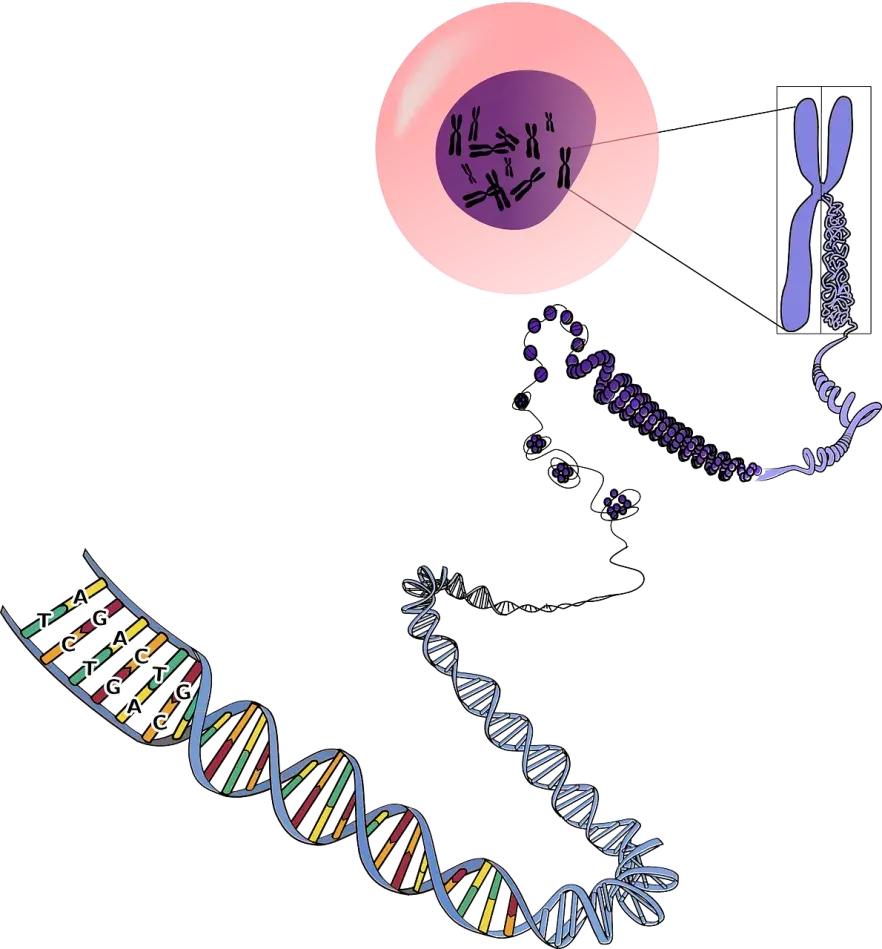Published on
Behind these three letters is the Deoxyribo-Nucleic Acid, which is often represented as a "double helix". DNA, we have to imagine it as very fine threads. To give you an idea, the width of DNA is like dividing 1 millimetre into 100,000 pieces!
The reason why these strands of DNA are so important is that they carry information called genes. This information is written with four elements, the nucleotides, called Adenine (represented by an A), Guanine (represented by a G), Cytosine (represented by a C) and Thymine (represented by a T). In all, in humans, 3 billion A, C, T and G will line up one after the other to "write" information.
We can compare this DNA alphabet system with our usual alphabet. Indeed, what usually allows us to write information, words, is also the way we align our 26 letters of the alphabet one after the other. For example, if we take the letters IDRB, and put them in the right order, it makes information that we understand: B.I.R.D.
Thus, to create information (genes), DNA only needs 4 different "letters": ACTG. Depending on how these letters line up, this makes it possible to write instructions that will partly determine the shape of the face, to make cells that defend us against microbes (to learn more about cells, go here), to build our skeleton, to produce pigments for eye color. In humans, there are more than 20,000 genes* that, together, allow us to build ourselves.
But, sometimes these don't line up as expected, sometimes they are missing, sometimes there are more than usual, sometimes letters replace others... it doesn't always have consequences, but, unfortunately, in some cases, these changes lead to genetic diseases. These diseases are rare, and can have serious symptoms for patients who sometimes suffer from them from birth. Because of their rarity, these diseases can be very complicated to identify, and many of them have no treatment. The Imagine Institute, with its medical and research teams, aims to understand how these diseases work, to help identify them, and also to enable the development of treatments to cure them.
* Depending on how scientists define the word "gene", this figure can vary widely, generally between 20,000 and 70,000!

